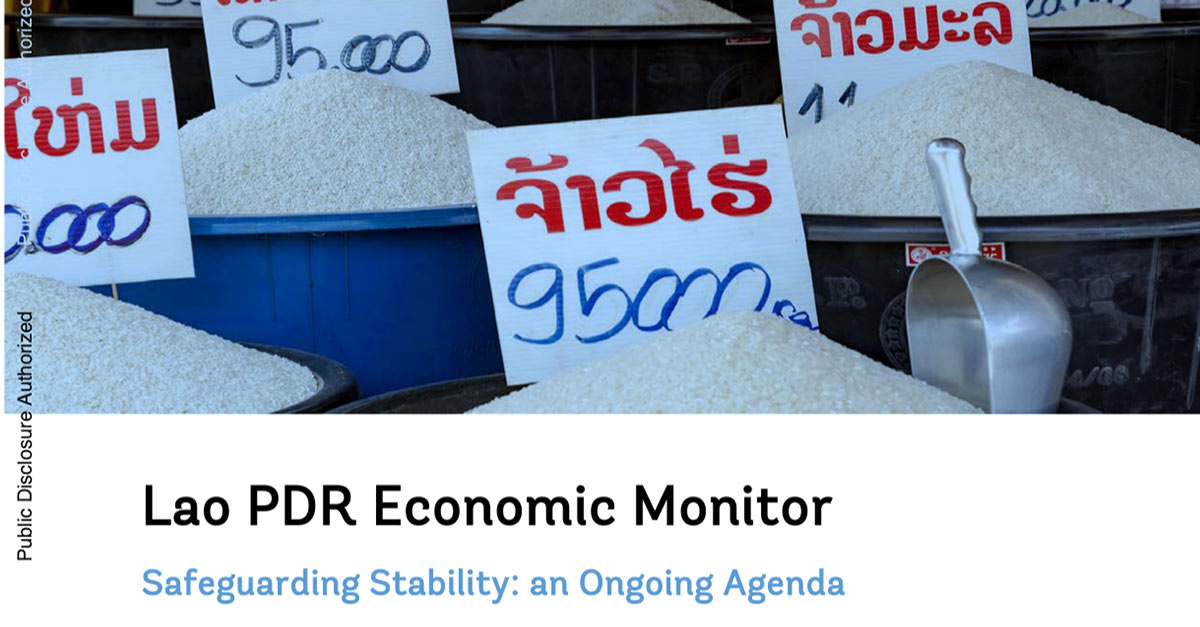Lao people are paying some of the highest prices for rice in the region despite the country being a significant rice producer, according to the recently released World Bank Economic Monitor on Laos.
Rice is the country’s biggest agricultural commodity. The crop covers about 75% of arable land in the country and 90% of production is glutinous rice (also known as sticky rice).
The production meets 95% of domestic consumption along with 70% of Lao households’ caloric and protein intakes.
However, Lao rice is not competitive in foreign markets with only 5% being exported, mainly to the neighboring countries of China and Vietnam.
The retail price for second grade rice in Vientiane Capital is about US$0.85 per kilogram, the highest among countries in the region.
The World Bank analysis suggests that farmers have comparatively low profit margins, while consumers are paying one of the highest prices for rice in the region.
Key challenges for Lao rice value chains include production costs, accounting for 29% of the final consumer price, the relatively high cost of hired labor, a lack of mechanization and low yields.
Improvements will depend on more productive partnerships between farmers and millers as well as more streamlined business regulations, improved public services to enhance rice commercialization, and better access to finance. These efforts will reduce farm production costs and increase the quality of rice, addressing some of the sector’s key challenges, said the report.
To download the full World Bank Economic Report on Laos, click here.



